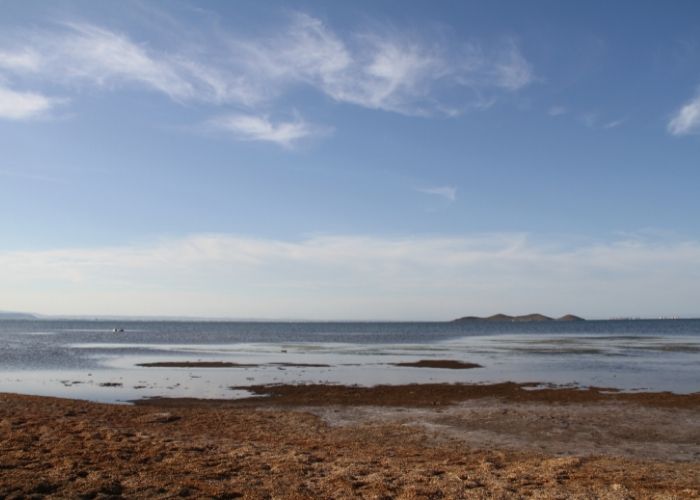MURCIA – An investigation has been launched as to why over the last few days, hundreds of dead fish have washed up on the shores of Mar Menor in the southern Spain region of Murcia. Mar Menor is one of the largest saltwater lagoons in Europe.
Among the dead fish are also blue crabs, prawns, and other crustaceans. These crabs are normally very strong and resistant. So, for these to be dead and dying means the situation is even worse than initially thought. Locals who witnessed the horrific scene alerted SOS Mar Menor. This is the fourth day into the tragedy. And as you can see from the official tweet, what is happening is very serious indeed!
Cuarto día 😔
La Manga – Km. 3
Frente Isla del Ciervo📹 @PAcToMarMENOR #SOSMarMenor#MarMenor2021#LaVuelta21 @PorUnMarVivo1 @EcoenAccionRM @ilp_marmenor @elegimosmmenor @NuestroMarMenor @laverdad_es @diariolaopinion pic.twitter.com/QugjBuISeo
— SOS Mar Menor (@sosmarmenorofi) August 19, 2021
Similar events in 2019 and in 2015
It is not the first time this has happened in the area. In 2015 the same phenomenon, described as extreme eutrophication, was blamed for colouring the waters of Mar Menor green. It killed 85% of the seagrass at the time.
Ecologists expressed concerns this week’s grim find could be a repeat of October 2019. At that time, in the same area, thousands of fish died and washed up on the beach. At the time, experts blamed the deaths on decades of nitrate-laden runoffs. Mostly from agriculture, making their way into the lagoon and sparking vast blooms of algae that depleted the water of oxygen. If this was the case, then essentially, the fish suffocated
Nothing appears to have changed since 2015
Researchers have long warned that the area was under extreme pressure. The lagoon sits adjacent to an expansive area of intensive agriculture, stretching about 60,000 hectares. Additionally, poor sewage systems in nearby towns, as well as discharge from mining activities, have added to the problem.
However, agricultural groups have pushed back against their claims. They say they are not to blame for the crisis and argue their processes are fully compliant with environmental legislation.
According to UK newspaper, The Guardian, regional government officials have denied that the deaths were caused by a lack of oxygen in the water or the presence of a toxic substance. They back this by citing preliminary studies conducted by a university in the region. Instead, however, they hinted the cause could be linked to the recent heatwave. And as such pointed to data that showed a rise in water temperature from 28.5C (83.3F) to 31C (87.8F) over two days.
However, Ada García Saura, who is among those pushing to protect Mar Menor by recognising it legally as a “person”, rejected the explanation. “The Mar Menor usually has a temperature of 26 or 27 degrees. We’re almost in a subtropical climate,” she said. “So, the flora and fauna of Mar Menor are adapted to these temperatures.”
#SOSMARMENOR
SOS Mar Menor calls for people to help raise awareness of the problems in the lagoon and to wear a t-shirt or flag with the message. Let’s make #SOSMARMENOR visible throughout Spain. They ask for this to be done on August 21 as La Vuelta passes through the area.
ANSE, a conservation group in the area, documented more dead specimens around the Tomás Maestre port of La Manga. The naturalist association will carry out analyses of the waters of the Mar Menor with the support of other organisations to look for the origin of the problem “beyond what official sources indicate.”
WWF (the conservation charity) also called on authorities to carry out a wider investigation to ensure lack of oxygen was not the cause. Until there is a proper investigation, it is impossible to find the cause of all these deaths.


